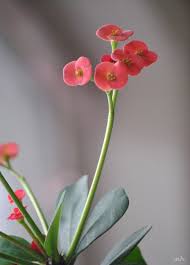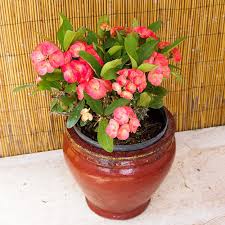Blue Willow China and the Classic Lifestyle

Blue Willow China, with its iconic blue-and-white design, has stood the test of time as one of the most beloved and recognizable patterns in the world of porcelain. Its classic design and historical significance have made it a staple in fine dining, interior decoration, and a symbol of refined taste. The pattern’s cultural relevance spans across centuries, particularly resonating with the values of classic living that emphasize tradition, elegance, and timeless beauty.
In this article, we will explore how Blue Willow China reflects the principles of the classic lifestyle—how it has contributed to the aesthetics of everyday living and become an integral part of a lifestyle that celebrates beauty, nostalgia, and high standards. Whether displayed in homes, on dining tables, or used as a feature in interior design, Blue Willow China has consistently embodied the essence of a classic lifestyle, offering both a visual and emotional connection to a bygone era of sophistication.
The Origins of Blue Willow China
Blue Willow China was first introduced in the late 18th century in England. Inspired by Chinese export porcelain, which had become immensely popular among European aristocracy, the Blue Willow design featured typical East Asian motifs such as pagodas, willow trees, bridges, birds, and landscapes. The intricate design is steeped in romanticism, often telling a story of forbidden love between a young woman and her lover who are tragically separated by a powerful father, only to be reunited in the afterlife. The narrative reflects themes of longing, separation, and eternal love—values that have long resonated with the ideals of a refined, classic lifestyle.
In the early days, the design was associated with wealth and social status. Blue Willow China was considered a luxury item, coveted by the elite of Europe and America. Over time, its influence spread, and it became available to the middle class, thanks to the mass production of the pattern by different manufacturers, such as Spode and Wedgwood. As a result, Blue Willow China became not only a symbol of wealth but also a representation of a cultured, well-rounded lifestyle.
Blue Willow and the Classic Domestic Lifestyle
A classic lifestyle is often characterized by an emphasis on tradition, nostalgia, and refinement in all aspects of life, including the home. The presence of Blue Willow China in the home has come to symbolize a commitment to these values, creating an ambiance that is both inviting and timeless. For generations, this design has graced dining tables, adding a touch of elegance to meals. Whether it was served at a formal dinner or during a family gathering, Blue Willow became synonymous with gracious hospitality and fine dining.
In homes decorated in a classic style, Blue Willow China naturally fits in with traditional décor. The porcelain’s blue-and-white color scheme works well with wood, antiques, and floral fabrics, evoking an atmosphere of charm and nostalgia. The repetitive patterns and delicate scenes provide a visual coherence that enhances the interior design while maintaining a sense of history. It became a beloved feature in the kitchens and dining rooms of many American and European homes, where families and guests would gather around the table to share meals.
The use of Blue Willow China also signifies an appreciation for the classics—whether in literature, art, or lifestyle. In a world filled with fast-paced changes, Blue Willow offers a connection to a slower, more deliberate era where quality and attention to detail were paramount. Owning a set of Blue Willow China was not just about owning beautiful porcelain; it was about owning a piece of history that spoke to a commitment to elegance and tradition.
Blue Willow China and Celebrations of the Classic Lifestyle
One of the defining features of the classic lifestyle is the way in which rituals and celebrations are infused with beauty and tradition. Blue Willow China has been a central part of many American and European celebrations for centuries, from family dinners to grand holiday feasts. Its presence at the table adds a sense of grandeur, making even the most ordinary meal feel like a special occasion.
The classic lifestyle places a high value on hospitality and the art of entertaining. Blue Willow China provides the perfect backdrop for entertaining guests, particularly at formal dinners and tea parties, where the pattern’s romantic story and timeless beauty become a topic of conversation. The design’s detailed scenes of landscapes and bridges evoke a sense of refinement and culture, making it an ideal conversation piece that adds a layer of sophistication to the dining experience.
Throughout the 19th and early 20th centuries, Blue Willow China was synonymous with family tradition. It was often passed down through generations as an heirloom, symbolizing the continuity of values and rituals within the family. The use of Blue Willow China during holidays like Thanksgiving, Christmas, and Easter was common, reinforcing the importance of celebrating life’s milestones with beauty and grace. For families who cherished a classic lifestyle, serving food on Blue Willow China was a way of honoring family traditions and creating lasting memories.
Blue Willow China in the World of Collecting
Another element of the classic lifestyle is an appreciation for collecting items that have historical or aesthetic value. Blue Willow China has become one of the most sought-after collectible porcelain patterns in the world, admired for its intricate design, historical significance, and connection to traditional craftsmanship. Collectors actively seek rare and vintage pieces, and entire collections are built around the pattern, adding a sense of continuity and nostalgia to the home.
Many collectors of Blue Willow China take pleasure in the hunt for rare or unique pieces that tell a story or offer insight into different periods of design. Whether it’s a piece from a specific manufacturer or a variation in the design, the search for these collectible items adds another layer to the classic lifestyle. For some, collecting Blue Willow China is about more than just acquiring beautiful pieces—it’s about curating a collection that tells a personal story, one that reflects their appreciation for history, culture, and craftsmanship.
The value of a Blue Willow China collection can also increase over time, making it an attractive investment for those with a keen eye for quality. Just as individuals may collect fine art or antiques, Blue Willow China has become a desirable asset for collectors who appreciate the timeless beauty and history behind the pattern.
The Influence of Blue Willow on Interior Design
Interior design is another area where Blue Willow China has made a significant impact. The timeless appeal of the blue-and-white porcelain has inspired designers to incorporate the pattern into contemporary and classic interiors alike. In classic home décor, Blue Willow China often features prominently in kitchens, dining rooms, and china cabinets, where it adds a touch of refinement to the space. The porcelain’s delicate design complements a variety of furniture styles, from traditional wood pieces to more modern minimalist designs.
Blue Willow China is also a frequent feature in country-style and cottage-style interiors, where it enhances the warm, inviting atmosphere that defines these spaces. The porcelain’s blue-and-white color scheme is versatile enough to fit into homes with various design themes, providing an elegant yet understated focal point in any room.
Even in more contemporary settings, Blue Willow China remains relevant. Designers often incorporate the pattern into tablescapes, offering a nod to tradition while maintaining a modern aesthetic. The enduring popularity of Blue Willow China in interior design speaks to its ability to bridge the gap between the past and the present, offering timeless beauty that fits into a variety of design schemes.
Blue Willow and Its Enduring Popularity
What makes Blue Willow China so enduring is its combination of aesthetic beauty, historical significance, and cultural relevance. For those who embrace the classic lifestyle, owning Blue Willow China is not just about having a piece of porcelain—it’s about honoring tradition, celebrating family, and connecting with the past. Whether it’s used during everyday meals or reserved for special occasions, Blue Willow brings a sense of elegance and charm to any table, reinforcing the timeless values of beauty, craftsmanship, and tradition that define the classic lifestyle.
In an ever-changing world, Blue Willow China remains a constant, a reminder of the importance of honoring history and celebrating life’s special moments with beauty and grace. Its role in the classic lifestyle is not merely about the porcelain itself, but about the values it represents—values that transcend time and continue to resonate with those who cherish the elegance and traditions of a bygone era.
Conclusion
Blue Willow China has been a symbol of classic living for centuries, offering a perfect blend of beauty, history, and cultural significance. As a staple in the homes of those who embrace a timeless, elegant lifestyle, it continues to reflect the values of tradition, grace, and nostalgia. Whether used as a cherished heirloom, displayed as a work of art, or enjoyed during family gatherings, Blue Willow China remains an enduring symbol of the classic lifestyle, inspiring generations to embrace the beauty of the past while celebrating the present.








